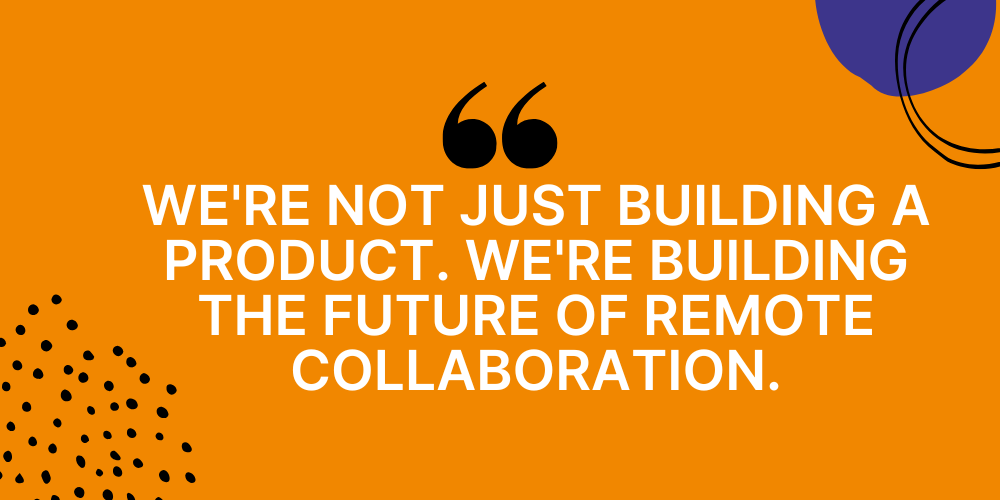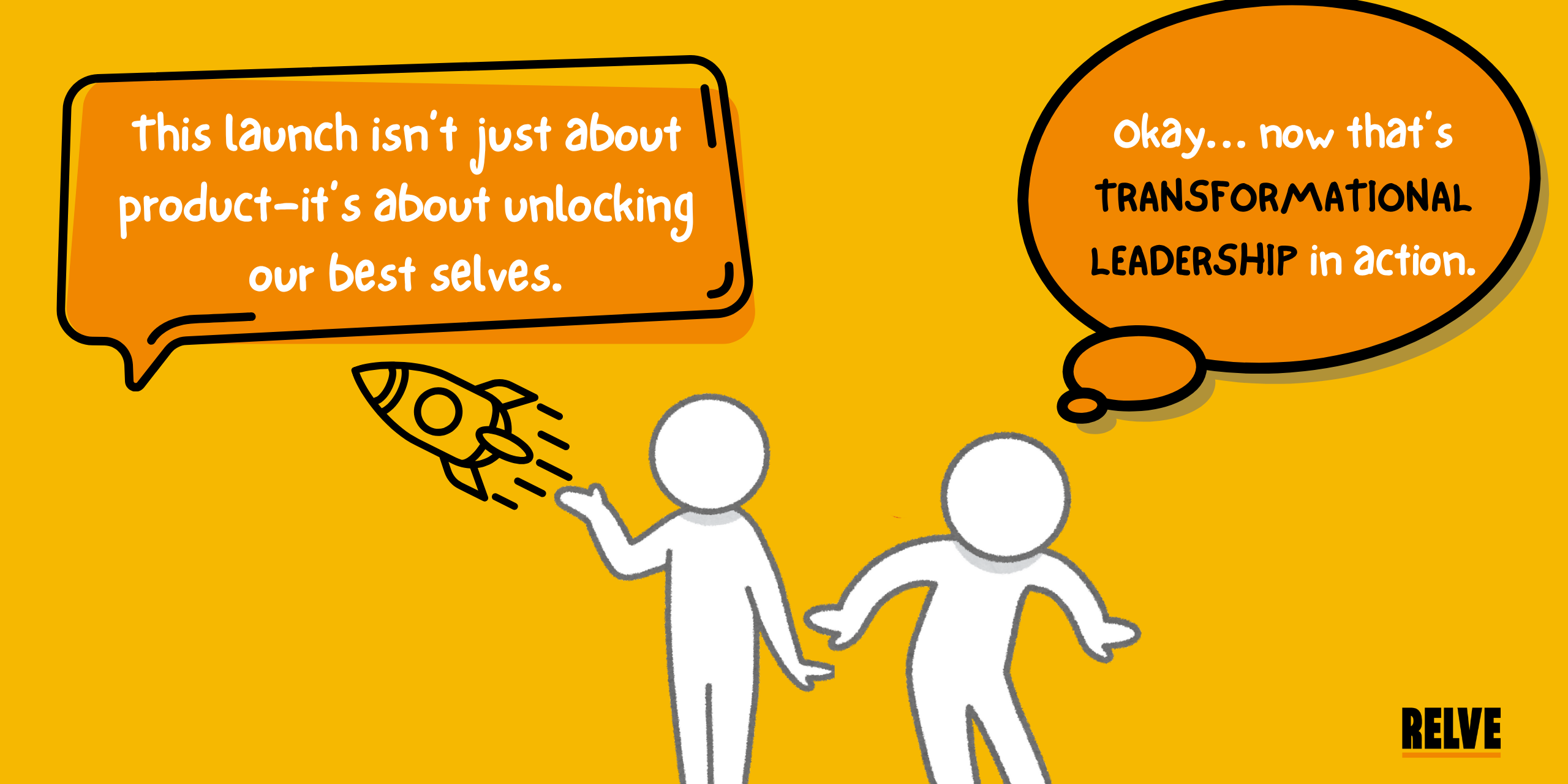Sarah, a tech-driven entrepreneur, is launching her new SaaS product in 6 months. She knows the journey ahead of her would be anything but easy. Tight timelines, limited resources, and an ambitious vision meant she couldn’t afford to micromanage. What she needed was a framework that would empower her team to own the mission and drive it forward. This is where transformational leadership comes into play.
Transformational leadership will not only inspire her team but will become the core reason her product will go from an idea to a launchpad in record time.
In this blog, we’ll walk you through how Sarah leveraged the principles of transformational leadership theory to motivate, enable, and grow her team. Every step incorporates real-world techniques, visual aids, and actionable tips that you can apply to your own product or team journey.
The Path to Transformational Leadership
Transformational leadership isn’t just a management style; it’s a mindset. One that brings inspiration, challenges, and develops team members so they can reach their full potential.
Let’s discover the five key pillars that guided Sarah on her entrepreneurial roadmap.
1. Inspire with Vision and Purpose

Collaboration. That’s how Sarah opened her very first team huddle. Her mission wasn’t just a tagline — it was a rallying cry that tied every line of code and user interface decision to a larger purpose.
Define and Share a Compelling Mission
Sarah began by crafting a one-page vision manifesto. It is clearly outlined:
- What the product aimed to solve (fragmented communication in remote teams)
- Who it served (early-stage startups and distributed companies)
- The impact it could make (increased productivity, better work-life balance)
She printed it out and posted it on their digital workspace and in their tiny office — it became the compass guiding all decisions.
Takeaway: Make team members believe in a shared mission.
Tie Day-to-Day Work to Long-Term Impact
Each sprint kicked off with a short story: a user persona struggling with remote productivity. Designers, developers, and marketers could then connect their tasks to real-world outcomes.
2. Model the Way
Sarah didn’t just talk about focus and discipline — she embodied it.
Lead by Example in Attitude, Focus, and Decision-Making
Whether it was attending every stand-up on time or responding with calm clarity during moments of chaos, Sarah became the barometer of behavior. During one high-stakes bug crisis, her steady approach turned panic into problem-solving.
Takeaway: Problems occur, and what is important is how you learn to tackle those issues head-on.
Uphold High Standards and Team Values Consistently
Sarah introduced a “quality-first” principle. Even if it meant delaying shipment by a day, they would not ship anything that didn’t meet their usability benchmarks.

3. Empower Ownership and Innovation
Rather than dictate how to solve every challenge, Sarah created the space for team members to lead.
Encourage Autonomy in Problem-Solving and Execution
When faced with a UX bottleneck, Sarah asked her junior designer, “What would you try if you had full control?” The designer not only proposed a new layout but also took the lead in testing and refining it, saving two weeks of iteration.
Sarah established innovation days every two weeks, where the team could explore ideas unrelated to the current roadmap. One of those experiments became the product’s most praised feature.
Support Risk-Taking and Creative Thinking Across Roles
Sarah fostered a “failure = learning” mindset. Instead of blaming a failed ad campaign, the team turned it into a retrospective presentation, sharing lessons learned with other startups on LinkedIn, which ironically boosted their visibility.
What Empowers Innovation?
4. Grow People and Relationships
Sarah believed that a product could only grow if the people behind it did first.
Mentor, Coach, and Create Growth Opportunities
She introduced biweekly 1:1 growth check-ins — not about work updates, but personal development. Her front-end developer, Alex, mentioned an interest in project management. Within a month, Sarah had him co-lead a product sprint.
Takeaway: Check-ins should be more than just weekly work updates. They can be invaluable in identifying personal as well as career growth opportunities.
Build Trust, Collaboration, and Psychological Safety
Sarah enforced a “no ridicule” brainstorming rule and implemented anonymous team feedback loops on a monthly basis. Even introverted team members began speaking up more confidently.

5. Reflect, Adapt, and Stay Aligned
Sarah’s secret weapon? She never let alignment slip through the cracks. Here’s what she did:
Use Regular Feedback Loops to Pivot Fast
Every Friday, the team held 30-minute retrospectives. These covered what worked, what didn’t, and what needed immediate change. When their beta feedback suggested pricing confusion, Sarah led a quick two-day test with new pricing tiers, which ultimately resulted in a considerable increase in conversion.
Align Efforts Through Shared Accountability and Retrospection
Sarah used a simple dashboard to track not just KPIs but shared OKRs tied to their mission. Everyone knew where they were winning — and where they needed to course-correct.
Why Transformational Leadership Works
Six months later, Sarah’s team had successfully launched their product, complete with a refined UX, beta testers-turned-advocates, and early revenue traction. But what launched wasn’t just software. It was a high-performing, deeply aligned team transformed by purpose, autonomy, and growth.
If you’re wondering how to define transformational leadership, this is it. It’s about lighting the path, walking it with integrity, and bringing others to their fullest potential along the way.
Yes, there are challenges of transformational leadership — it takes time, self-awareness, and consistency. But the payoff? A resilient team and a successful launch.
In Sarah’s journey, we saw clear examples of transformational leadership in management, including setting a vision, enabling innovation, fostering growth, and driving alignment.
Can you list which characteristics of transformational leadership you exhibit for your teams? This checklist can help you identify your focus areas:
Empower Teams with Transformational Leadership
Sarah's story can also be your success story. Apply these concepts of transformational leadership to empower your teams today.
